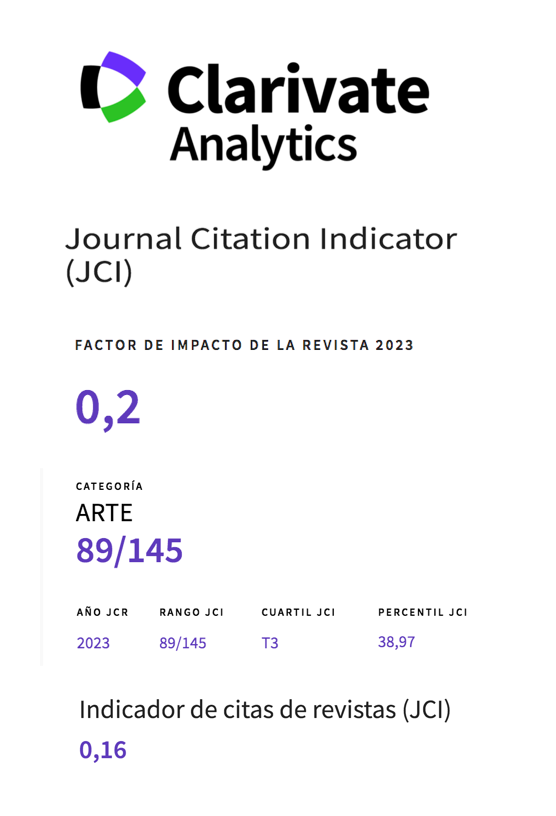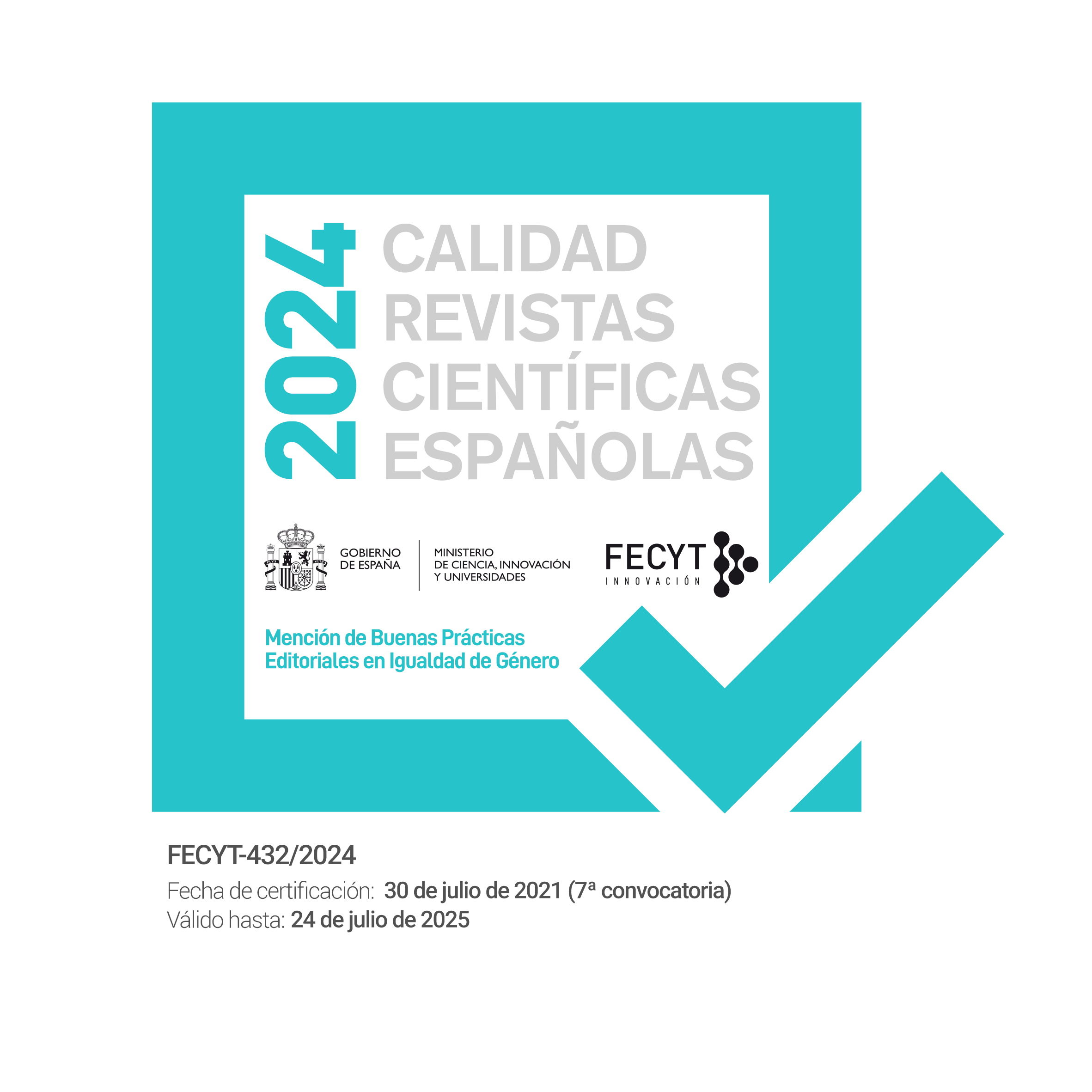Encuentros en el jardín: un espacio convergente entre la animación y la discapacidad intelectual
Resumen
Este artículo tiene como objetivo la narración de las motivaciones, proceso y resultados de Encuentros en el jardín, residencia artística en la que participaron mujeres con discapacidad intelectual o del desarrollo de la Fundación Alas Madrid1 coordinadas por la artista que firma estas líneas. Este proyecto fue uno de los 4 seleccionados en la edición de 2020 del programa Espacios Convergentes2, iniciativa lanzada en el marco del proyecto Más cultura, Más inclusión3, financiada por Plena Inclusión Madrid4 y la Fundación Repsol5. La residencia, desarrollada entre octubre de 2020 y junio de 2021, se centró en un trabajo multisensorial realizado a partir de la naturaleza del jardín de la Fundación Alas, utilizando técnicas variadas como el dibujo, grabado, manipulación de objetos y efecto del azar, la escucha y experimentación sonora, enfocadas a la realización de píldoras animadas. El trabajo culminó con el montaje y presentación de una pieza final de animación y una exposición de una muestra del trabajo desarrollado. Encuentros en el jardín puede entenderse como un viaje multisensorial colectivo en el que se ha trabajado sobre el movimiento de la vida reflejado en el jardín, utilizando la repetición. Movimiento, cambio y metamorfosis son ubicuos y nos constituyen; hemos, entre todas, dado vida y visibilizado ese cambio, que a su vez nos visibiliza: hemos animado.
Descargas
-
Resumen287
-
pdf391
Citas
Animate Assembly. (s.f.). https://www.animateassembly.org/animate-assembly/
Plena Inclusión. (11 de junio de 2021). Presentado el corto de animación resultado de la residencia artística Encuentros en el jardín. https://plenainclusionmadrid.org/noticias/corto-animacion-encuentros-en-el-jardin/
Ashworth, J. (2020). Animation is a refuge: ¨arrivants¨dwell in the stories of the mind, en Animation Studies, Vol. 15. Society for Animation Studies. https://journal.animationstudies.org/joan-ashworth-animation-is-a-refuge-arrivants-dwell-in-the-stories-of-the-mind/
Barton, G. y Hosea, B. (2017). Animation as Mindful Practice. Animation Practice, Process & Production, 6(1). 149-171. https://research.uca.ac.uk/5012/
Buchan, S. (2013). Introduction: Pervasive Animation. En Buchan, S. (Ed.) Pervasive Animation (pp. 1-21), Routledge.
Dewey, J. (2008). El arte como experiencia. Paidós Estética.
Forensic Architecture. (s.f.). Recuperado el 11 de octubre de 2022. https://forensic-architecture.org/about/agency
García, C. (17 de noviembre de 2020). Encuentros en el jardín. [Canal de YouTube con la evolución del proyecto]. https://www.youtube.com/channel/UCxKGR8wdHT2TN5KacEjGmNQ
García, C. (2018). Metamorphoses (a project on the multiple identities that inhabit us). En 6th International Conference on illustration and Animation CONFIA_Proceedings Book (pp. 176-185). Instituto Politécnico do Cávado e do Ave.
Greenhalgh, W. A. (2015). Mindfulness & the Art of Drawing. A Creative Path to Awareness. Leaping Hare Press.
Hani, M. (2017). Defining Animation Therapy: the Good Hearts Model. En Animation Practice, Process & Production, 6(1), (17-51). Intellect. https://doi.org/10.1386/ap3.6.1.17_1
Ingold, T. (2011). Being Alive. Essays on movement, knowledge and description. Routledge.
Pallasmaa, J. (2014). La mano que piensa. Sabiduría existencial y corporal en la arquitectura. Gustavo Gili.
Rutherford, Jessica. (2020). Challenges Surrounding participatory practice research in Animation: the case of FASD affected participants. En Animation Studies, 15. Society for Animation Studies. https://journal.animationstudies.org/category/volume-15/jessica-rutherford-challenges-surrounding-participatory-practice-research-in-animation-the-case-of-fasd-affected-participants/
Warner, M. Stories in transit. https://www.marinawarner.com/teaching-and-other-activities/current-projects/
Works published in this journal are subject to the following terms:
- The Service of Publications from the University of Murcia (publishing house) keeps the published works’ copyrights, and favors and allows the reuse of these works under the license indicated in point 2.
- Works are published in the journal’s online edition under the license Creative Commons Reconocimiento-NoComercial-SinObraDerivada 3.0 España(texto legal). They can be copied, used, disseminated, transmitted and publicly exhibited, as long as: i) the author and original source of publication are cited (journal, publishing house and work’s URL); ii) they are not used for commercial purposes; iii) the existence and specifications of this license are mentioned.
3. Conditions for auto-file. It is allowed and encouraged that authors share electronically their pre-print version (the pre-reviewed version) and /or post-print version (the reviewed and accepted version) of their Works before the publication, since it promotes its circulation and dissemination. RoMEO color: green.










